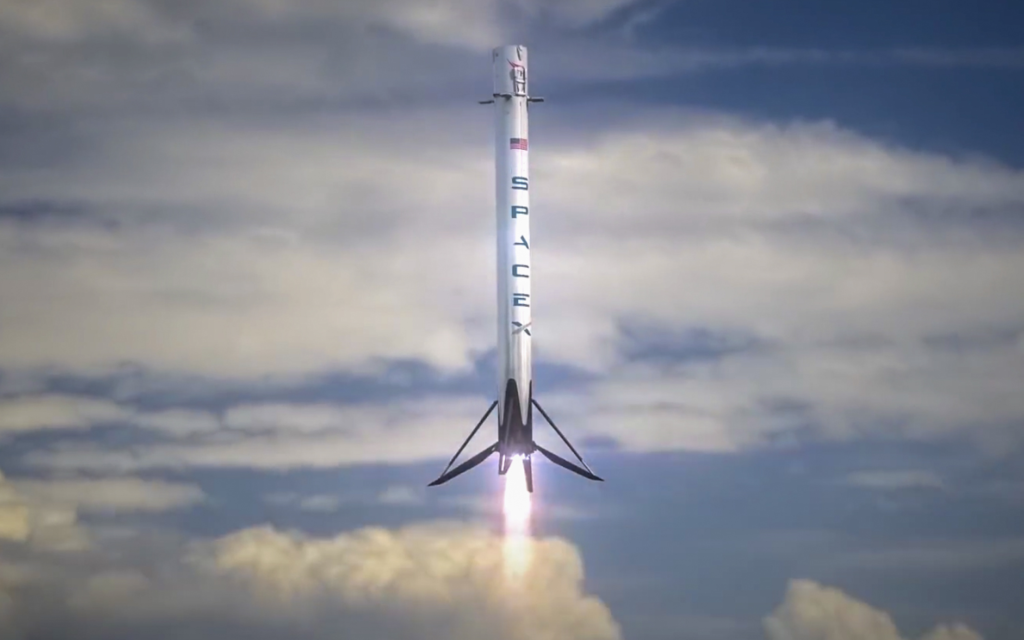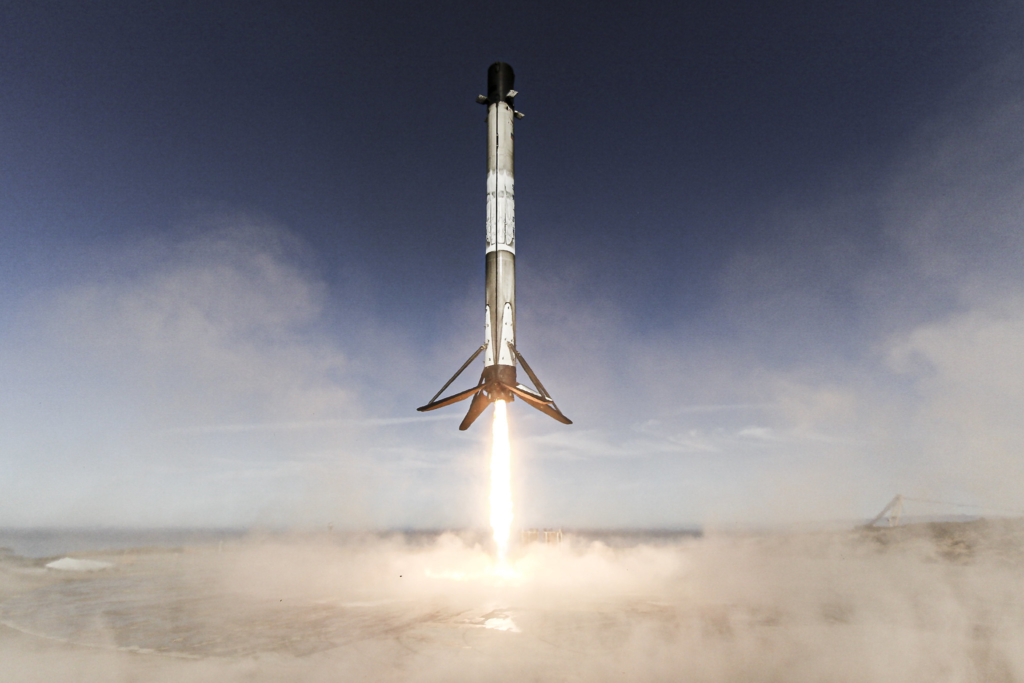
Why SpaceX Discards Boosters In The Ocean
As SpaceX has increased the number of Falcon 9 and Heavy missions significantly, we have seen more and more expendable launches. During an expendable launch, rather than the booster head back to land or a droneship at sea, it often has reusable hardware removed before launch and is discarded after stage separation. Even though reusability has saved the company a ton of money and contributed to the current record-setting launch cadence, it’s not perfect for every mission.
When SpaceX reuses a Falcon 9 booster for example, they use the combination of grid fins, propulsive landing burns, and four landing legs to orient, slow, and successfully land the stage. This process can reduce the payload performance with added weight from everything just listed along with the fact that a decent amount of propellant needs to be saved for landing.
Some missions due to the size or weight of their payload, or even the destination, require more from the launch vehicle. However, this increased performance often comes with a higher price tag with a booster being lost. Here I will go more in-depth into SpaceX’s expendable boosters, the performance boost provided, why some launches require this approach, and more.
Expending Boosters

Reusability is an integral part of the Falcon program. SpaceX pioneered reusability with the first re-flight of an orbital class rocket in 2017. By late 2021, SpaceX had re-flown rockets more than 65 times, with a 100% success rate. Since 2018, SpaceX had more missions launching with a flight-proven rocket than a first flight rocket. SpaceX also started re-flying fairings in late 2019, and at the end of 2020 had re-flown more than 40 fairing halves with a 100% success rate. The company was quoted saying, “By re-flying boosters and fairings, SpaceX increases reliability and improves its designs and procedures by servicing and inspecting hardware as well as incorporating lessons that can only be learned from flight.
More recently, these numbers have only gone up almost exponentially. Only a few months ago SpaceX released a video of the Falcon launch cadence over the past few years. It helps put in perspective the number of launches that are happening right now, mainly thanks to reusability. It’s not just about saving money but simply refurbishing a booster rather than creating a new one. A process that SpaceX has only gotten faster at.
Despite all these great examples of booster reusability, some still get expended. This year alone a few Falcon 9 boosters were not reused, however, for the Falcon Heavy this method is far more popular. In the three launches completed between early 2023 and now, every single launch expended at least a single booster. The first launch in January expended the center core, the next launch in April expended all three boosters, and the most recent launch last month was only the center core.
In all those examples, this was planned and they launched the boosters without any of the grid fins or landing gear. The Falcon 9 payload to LEO in a reusable format is around 17,400kg while when expendable it rises to 22,800kg. The partially reusable Falcon Heavy falls into the heavy-lift range of launch systems, capable of lifting 20,000 – 50,000kg into low Earth orbit (LEO). A fully expendable Falcon Heavy is in the super heavy-lift category with a maximum payload of 64,000kg to low Earth orbit. This significant difference explains why Falcon Heavy launches are more likely to include at least a single expendable booster.
When referring to the payload capacity, Musk was quoted saying, “the max performance numbers are for expendable launchers. Subtract 30% to 40% for reusable booster payload.” In order to make the Falcon 9 reusable and return to the launch site, extra propellant and landing gear must be carried on the first stage, requiring around a 30 percent reduction of the maximum payload to orbit in comparison with the expendable Falcon 9. Reflight of a previously used stage on a subsequent flight is dependent on the condition of the landed stage, and is a technique that has seen little use outside of the Space Shuttle’s reusable solid rocket boosters.
In general, customers purchasing flights on Falcon 9 and Falcon Heavy have specific performance and destination needs. With a heavy-lift rocket in particular, the difference between a reusable and expendable configuration could determine whether or not the payload can reach its designated orbit and even how long it stays there.
Falcon Reuse

All the way back in 2015, Musk projected that the reflight step of the program would be “straightforward,” because of the multiple full duration firings of the engines that had been done on the ground, and the multiple engine restarts that had been demonstrated by that time, with no significant degradation seen. Later that year, industry analysts continued to forecast problems that could prevent economic reuse because costs to refurbish and relaunch the stage were not yet demonstrated, and the economic case for reuse would necessarily be highly dependent on launching frequently. Eventaully SpaceX was successful and began reusing boosters again and again.
In order to achieve the full economic benefit of the reusable technology, it is necessary that the reuse be both rapid and complete—without the long and costly refurbishment period or partially reusable design that plagued earlier attempts at reusable launch vehicles. SpaceX had been explicit that the “huge potential to open up space flight” is dependent on achieving both complete and rapid reusability. According to Musk, almost every piece of the Falcon should be reused over 100 times. Heat shields and a few other items should be reused over 10 times before replacement.
Overtime, this process has proved to be extremely reliable. Last month, Falcon 9 had achieved 244 out of 246 full mission successes (99.2%). SpaceX CRS-1 succeeded in its primary mission, but left a secondary payload in the wrong orbit, while SpaceX CRS-7 was destroyed in flight. In addition, AMOS-6 disintegrated on the launch pad during fueling for an engine test. In 2016, Musk described the version Block 5 Falcon 9 version as coming with “a lot of minor refinements that collectively are important, but uprated thrust and improved legs are the most significant”. He later added that Block 5 “significantly improves performance and ease of reusability”. The Block 5 second stage included upgrades to enable it to linger in orbit and reignite its engine three or more times.
By now, Block 5 has a success rate of 100% (190/190). For comparison, the industry benchmark Soyuz series has performed 1880 launches with a success rate of 95.1% (the latest Soyuz-2’s success rate is 94%), the Russian Proton series has performed 425 launches with a success rate of 88.7% (the latest Proton-M’s success rate is 90.1%), the European Ariane 5 has performed 110 launches with a success rate of 95.5%, and Chinese Long March 3B has performed 85 launches with a success rate of 95.3%.
As partially mentioned prior, although the reusable launch system technology was developed and initially used for the first stages of the Falcon family of rockets, it’s particularly well suited to the Falcon Heavy where the two outer cores separate from the rocket earlier in the flight, and are therefore moving more slowly at stage separation. For example, on Falcon 9 flight 20, the speed at separation was close to 6000 km/h and this allowed a return to near the launch site. On flight 22, going to a more energetic GTO orbit, the higher velocity at separation was between 8000 and 9000 km/h. At these faster speeds it is not possible to return the booster to near the launch site for a landing; if a landing is attempted it needs to be hundreds of kilometers downrange on an autonomous droneship.
SpaceX offers three options, depending on launch requirements: landing on land, landing at sea or expending the first stage, in order of increased performance and cost. Any Falcon flights launched into geostationary orbit or exceeding escape velocity require landing at sea, or expending the first stage. Less demanding launches from Florida can return to Landing Zones 1 and 2 at Cape Canaveral Space Force Station, while less demanding launches from California can return to Landing Zone 4. Around three-quarters of recovered Falcon boosters land at sea as of 2022.
An autonomous spaceport drone ship (ASDS) is an ocean-going vessel derived from a deck barge, outfitted with station-keeping engines and a large landing platform, and is autonomously positioned when on station for a landing. They are capable of precision positioning, originally stated to be within 3 m (9.8 ft) even under storm conditions, using GPS position information and four diesel-powered azimuth thrusters. In addition to the autonomous operating mode, the ships may also be telerobotically controlled. The azimuth thrusters are hydraulic propulsion outdrive units with modular diesel-hydraulic-drive power units manufactured by Thrustmaster, a marine equipment manufacturer in Texas. The returning first stage must not only land within the confines of the deck surface, but must also deal with ocean swells and GPS errors.
Conclusion
SpaceX has made some very impressive progress over time related to booster recovery. Even with this being the case, we are seeing more and more expendable booster launches as Falcon Heavy takes to the skies more often. We will have to wait and see how it progresses and the impact it has on the space industry.